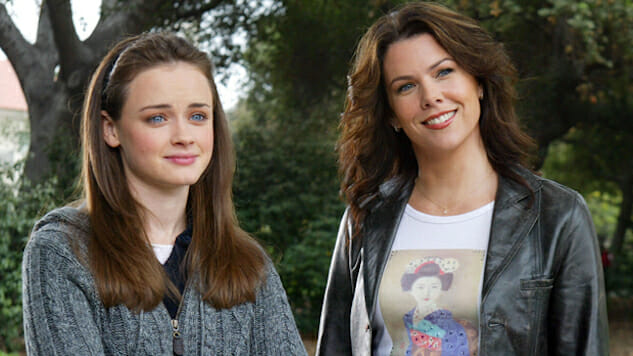TV Rewind: The Sneaky Sophistication of Gilmore Girls
Photo Courtesy of WBTV
Editor’s Note: Welcome to our TV Rewind column! The Paste writers are diving into the streaming catalogue to discuss some of our favorite classic series as well as great shows we’re watching for the first time. Come relive your TV past with us, or discover what should be your next binge watch below:

For a person unusually prone to being moved by the romantic charms of New England, it’s surprising how much I resisted Gilmore Girls at first. A close friend who is a fan of the show kept telling me I would like it if I just gave it a chance. I was mostly aware of the Gilmores in the deep recesses of my memory; I was just a kid when it was on, and sometimes my mom would watch episodes in the afternoons, and I would sit next to her, not unlike the way Lorelai and Rory Gilmore (Lauren Graham and Alexis Bledel) would sometimes mindlessly play a movie that somehow reminded them of themselves. As an adult with access to a Netflix account, one day I had a cold, and lying on the couch I played the first episode. And the next, and the next, and the next. I’d resisted the show because I had certain preconceptions that something worth watching should announce itself as such: the cutesy vibes tricked me, and the show’s reputation as something “for girls who like reading” was insulting in the way that kind of generalization is. But this was before I realized this is exactly what Gilmore Girls is: a show for girls who like reading, in the most unassuming sense.
Charm, like cuteness, can wear off, but Gilmore Girls thrives on it for seven straight seasons. There is the charm of Stars Hollow, a fictional Connecticut small town populated by good-natured neighbors whose faults are comically irritating; of a diner whose owner knows the name of every local customer; of a place where property is accessible and you can walk everywhere. Equally as important, there is the charm of the Gilmores: their intelligence and wit, their dreamy blue eyes, the inimitable way Lorelai wears leather knee-high boots with skirts. Stars Hollow matters as the background to all of this because the Gilmores are at once a product of and divergents from their milieu: at once girl-next-door and girl-extraordinaire, a mash-up of the fantasy of a woman and her incontestable reality. They’re aware of the way they embody fantasy and they’re loud about their quirks; they’re also as loud about their diversion as they are about their attachment to the environment from which they’re supposed to be fleeing. The Gilmore version of following in your mother’s footsteps is to rebel benevolently: to leave Hartford for Stars Hollow, a few (crucial) miles away; to trade Harvard’s Cambridge for Yale’s Connecticut; to drop out of Yale and then re-enroll; to be the one woman in your local D.A.R group with a pregnant teen daughter who you will criticize as fiercely as you will protect her. This, too, has its charms: the Gilmores are ever unable to leave the place where they’re the most attractive outsiders.
These contradictions are fundamental to the Gilmores and to the structure of their dynamics. The superficial sheen of the cute and quirky belie a nuanced understanding of character, as well as an unrelenting attention to spirit. The show takes a real interest in these women, whose ambiguity is the kind you see written into prestige television. There is a way in which Gilmore Girls reminds me of a much more critically acclaimed show about the successes and failures of womanhood and its bonds; much like Lena Dunham’s Girls, the mistakes, stubbornness and self-involvement of the Gilmores can be maddening in its reality and the way we see ourselves in them.
-

-

-

-

-

-

-

-

-

-

-

-

-

-

-

-

-

-

-

-

-

-

-

-

-

-

-

-

-

-

-

-

-

-

-

-

-

-

-

-








































